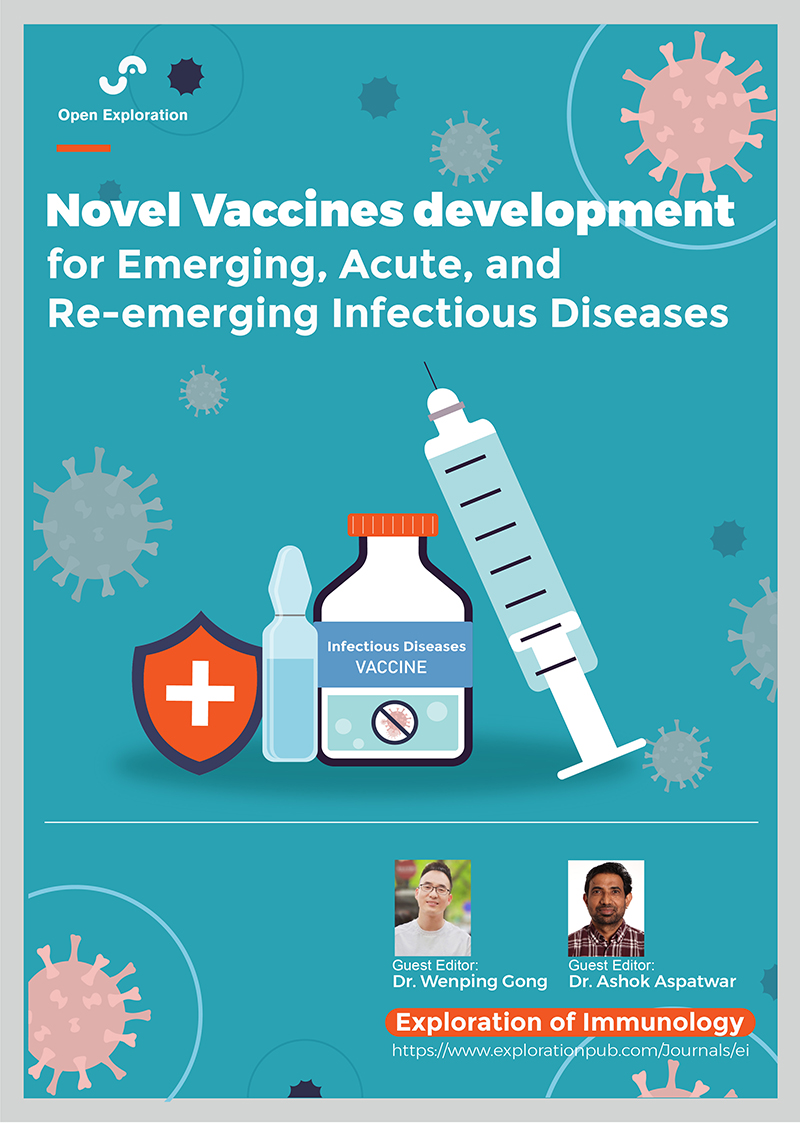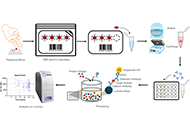
Novel Vaccines development for Emerging, Acute, and Re-emerging Infectious Diseases
Guest Editors
About the Special lssue
The accelerating pace of globalization has intensified the interconnectivity among nations, leading to an increased risk of rapid dissemination of emerging, acute, and re-emerging infectious diseases. These diseases pose significant challenges to global health security due to their high transmissibility, pathogenicity, and potential for causing widespread outbreaks. Traditional vaccine development, often a time-consuming process, may not keep pace with the urgent need for effective preventative measures against such pathogens. Therefore, there is a pressing demand for innovative approaches that can accelerate the development of novel vaccines to combat these infections, a process intricately involving virology, immunology, molecular biology, and more recently, structural biology, bioinformatics, and immunoinformatics.
This special issue, titled “Novel Vaccines Development for Emerging, Acute, and Re-emerging Infectious Diseases,” aims to spotlight innovative strategies and scientific advancements in vaccine research against these critical health threats. It seeks contributions that push the frontier of vaccine science, from identifying new pathogen targets using cutting-edge techniques to designing vaccines that are effective across diverse populations. In addition to discussing traditional methodology, this issue will emphasize how modern computational approaches and cross-disciplinary technologies can radically advance our capability to design effective vaccines more rapidly and precisely.
Potential topics include but are not limited to the following:
Rapid Identification and Vaccine Target Mining for Emerging Pathogens: Exploration of how technologies like high-throughput sequencing and bioinformatics facilitate the swift identification of pathogens and the effective mining of vaccine targets.
Design and Application of mRNA Vaccines: Insights into the application of mRNA technology in novel vaccine development, focusing on design principles, manufacturing processes, clinical trial outcomes, and assessments of long-term immunogenicity.
Adenovirus Vector-based Vaccine Strategies: Analysis of adenovirus vector vaccines, discussing their design, immunogenicity, safety profiles, and potential in combating acute and re-emerging infections.
Advancements in Adjuvants for Vaccine Efficacy and Duration: Discussions on the role of adjuvants in enhancing vaccine effectiveness and prolonging immunity, focusing on mechanisms and current applications.
Challenges and Strategies in Developing Cross-Protective Vaccines: Research on developing vaccines that offer broad protection against various pathogens, addressing challenges such as immune responses and tolerance.
Vaccine Efficacy and Safety in Specific Populations: Examination of how vaccines perform across different demographics, including varying ages and pre-existing conditions, highlighting safety and efficacy evaluations.
Global Collaboration and Equitable Vaccine Distribution Strategies: Exploration of global efforts in coordinated research, technology transfer, and strategies to ensure rapid and fair distribution of vaccines worldwide.
Application of Structural Biology and Bioinformatics in Vaccine Design: Discussing the impact of structural biology and bioinformatics in precisely identifying and predicting immunogenic epitopes, enhancing the rational design of multi-epitope vaccines.
The Role of Immunoinformatics in Optimizing Vaccine Design: Insights into how immunoinformatics can guide the optimization of vaccine designs through understanding host-pathogen interactions and predicting vaccine responsiveness and potential immune escape variants.
Keywords: Infectious diseases, Immune mechanism, Vaccines, Adjuvants, Bioinformatics, Immunoinformatics, Emerging, acute, and re-emerging infectious disease
Published Articles
